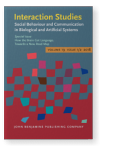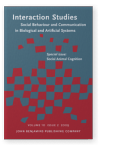Masako Myowa-Yamakoshi
List of John Benjamins publications for which Masako Myowa-Yamakoshi plays a role.
2020 The comparative neuroprimatology 2018 (CNP-2018) road map for research on How the Brain Got Language How the Brain Got Language – Towards a New Road Map, Arbib, Michael A. (ed.), pp. 370–387 | Chapter
We present a new road map for research on “How the Brain Got Language” that adopts an EvoDevoSocio perspective and highlights comparative neuroprimatology – the comparative study of brain, behavior and communication in extant monkeys and great apes – as providing a key grounding for hypotheses on… read more
2020 The evolutionary roots of human imitation, action understanding and symbols How the Brain Got Language – Towards a New Road Map, Arbib, Michael A. (ed.), pp. 183–199 | Chapter
This paper focuses on how human complex imitation and its developmental processes are related to the abilities for action representation, acquisition of symbols, and language. After overviewing the characteristics of imitation in chimpanzees and humans, I propose a model of imitation emphasizing… read more
2018 The comparative neuroprimatology 2018 (CNP-2018) road map for research on How the Brain Got Language How the Brain Got Language: Towards a New Road Map, Arbib, Michael A. (ed.), pp. 370–387 | Article
We present a new road map for research on “How the Brain Got Language” that adopts an EvoDevoSocio perspective and highlights comparative neuroprimatology – the comparative study of brain, behavior and communication in extant monkeys and great apes – as providing a key grounding for hypotheses… read more
2018 The evolutionary roots of human imitation, action understanding and symbols How the Brain Got Language: Towards a New Road Map, Arbib, Michael A. (ed.), pp. 183–199 | Article
This paper focuses on how human complex imitation and its developmental processes are related to the abilities for action representation, acquisition of symbols, and language. After overviewing the characteristics of imitation in chimpanzees and humans, I propose a model of imitation emphasizing… read more
2009 The supine position of postnatal human infants: Implications for the development of cognitive intelligence Social Animal Cognition, Matsuzawa, Tetsuro (ed.), pp. 252–269 | Article
In this review, we discuss the implications of placing an infant in the supine position with respect to human cognitive development and evolution. When human infants are born, they are relatively large and immature in terms of postural and locomotor ability as compared with their closest… read more


